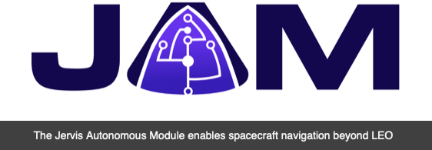
SpaceFund Inc. has invested in the rapidly growing astrophysics start-up company Rhea Space Activity (RSA). SpaceFund’s capital injection into RSA will energize the company’s ongoing development of scientific and engineering infrastructure needed to create a holistic, world-leading Lunar Intelligence (LUNINT) capability as soon as 2024. This capability will yield a vital product for the commercial space sector: the introduction of an autonomous navigation capability that will help the New Space ecosystem travel further into the solar system.

Spacecraft that traverse beyond geostationary orbit lose the ability to navigate using the Earth-bound Global Positioning System (GPS). “Cislunar” refers to the vast area of space between the Earth and the Moon. Currently, a singular “Cislunar” spacecraft must perform two-way ranging with a ground station on Earth to determine its location – an expensive process that must be calculated in complex, ever-changing gravitational environments. RSA has solved this problem by providing spacecraft with the ability to navigate, without GPS or ranging with ground stations.

The solution is RSA’s Jervis Autonomous Module (JAM). JAM is based on a proprietary deep space navigation algorithm that enabled NASA’s Deep Impact mission to autonomously steer a projectile into a comet at a speed of 22,000 mph, resulting in an explosion equivalent to 4.8 tons of TNT.
JAM is an innovative navigational technology named after the late scholar and geographic engineer, Major Thomas Best Jervis, who led the establishment of the U.K.’s Department of Topography and Statistics in 1855, which would eventually become the first government-established Intelligence Branch. JAM will significantly decrease the cost, number of operators, navigators, and frequency of communications required to maneuver in Cislunar space, and over time, will provide a fundamentally different way to control all manner of spacecraft.
SpaceFund’s investment will also support the design of an autonomous Cislunar surveillance constellation of satellites to track current and future spacecraft operated by U.S. near-peer competitors. The first satellite in this constellation, called JERVIS-1, will leverage the JAM module, and is planned to enter a resonant retrograde orbit by the year 2024 to track objects in both Cislunar space and the geostationary belt. The USAF recently awarded RSA a Phase II Small Business Innovation Research program (SBIR) contract to develop an all-encompassing LUNINT capability.
“This new capability is vital for both national security and the future of the commercial sector as companies start to target destinations beyond Earth orbit,” said Meagan Crawford, co-founder and managing partner of SpaceFund. “RSA has the right team and domain knowledge to provide these highly valuable technologies to a rapidly growing number of customers.”
“In addition to reducing costs for customers, JAM enables stealth for cislunar spacecraft. This is similar to nuclear submarines that navigate underwater for months without contact, only to surface at opportune times. Satellites equipped with JAM can operate autonomously for months in a radio-silent manner in a region of space that is currently unmonitored,” said Shawn Usman, astrophysicist and founder of RSA. “This type of autonomy is required for the U.S. and Five-Eyes partners to realize a true LUNINT capability.”
The Five-Eyes is an intelligence sharing alliance between the United States, Australia, Canada, New Zealand, and the United Kingdom.
Rhea Space Activity (RSA) is an astrophysics company that formulates and creates high-risk/high-reward research and development concepts to support U.S. national security objectives. RSA has developed various technologies in the fields of infrared satellites, directed energy, artificial intelligence, Light Detection and Ranging (LIDAR), astro-particle physics, small satellites, cis-lunar operations, intelligence collection, autonomous underwater vehicles, and for the F35 Lightening II.
